Cuong Do
Exploring the Practicality of Federated Learning: A Survey Towards the Communication Perspective
May 30, 2024Abstract:Federated Learning (FL) is a promising paradigm that offers significant advancements in privacy-preserving, decentralized machine learning by enabling collaborative training of models across distributed devices without centralizing data. However, the practical deployment of FL systems faces a significant bottleneck: the communication overhead caused by frequently exchanging large model updates between numerous devices and a central server. This communication inefficiency can hinder training speed, model performance, and the overall feasibility of real-world FL applications. In this survey, we investigate various strategies and advancements made in communication-efficient FL, highlighting their impact and potential to overcome the communication challenges inherent in FL systems. Specifically, we define measures for communication efficiency, analyze sources of communication inefficiency in FL systems, and provide a taxonomy and comprehensive review of state-of-the-art communication-efficient FL methods. Additionally, we discuss promising future research directions for enhancing the communication efficiency of FL systems. By addressing the communication bottleneck, FL can be effectively applied and enable scalable and practical deployment across diverse applications that require privacy-preserving, decentralized machine learning, such as IoT, healthcare, or finance.
Efficiently Assemble Normalization Layers and Regularization for Federated Domain Generalization
Mar 22, 2024Abstract:Domain shift is a formidable issue in Machine Learning that causes a model to suffer from performance degradation when tested on unseen domains. Federated Domain Generalization (FedDG) attempts to train a global model using collaborative clients in a privacy-preserving manner that can generalize well to unseen clients possibly with domain shift. However, most existing FedDG methods either cause additional privacy risks of data leakage or induce significant costs in client communication and computation, which are major concerns in the Federated Learning paradigm. To circumvent these challenges, here we introduce a novel architectural method for FedDG, namely gPerXAN, which relies on a normalization scheme working with a guiding regularizer. In particular, we carefully design Personalized eXplicitly Assembled Normalization to enforce client models selectively filtering domain-specific features that are biased towards local data while retaining discrimination of those features. Then, we incorporate a simple yet effective regularizer to guide these models in directly capturing domain-invariant representations that the global model's classifier can leverage. Extensive experimental results on two benchmark datasets, i.e., PACS and Office-Home, and a real-world medical dataset, Camelyon17, indicate that our proposed method outperforms other existing methods in addressing this particular problem.
Detecting COVID-19 from digitized ECG printouts using 1D convolutional neural networks
Aug 10, 2022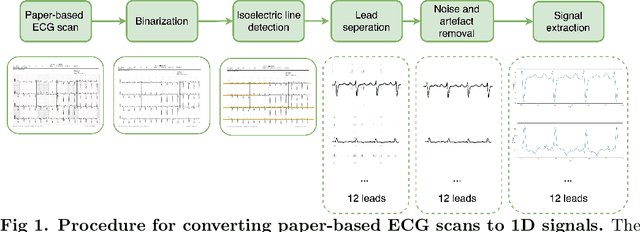

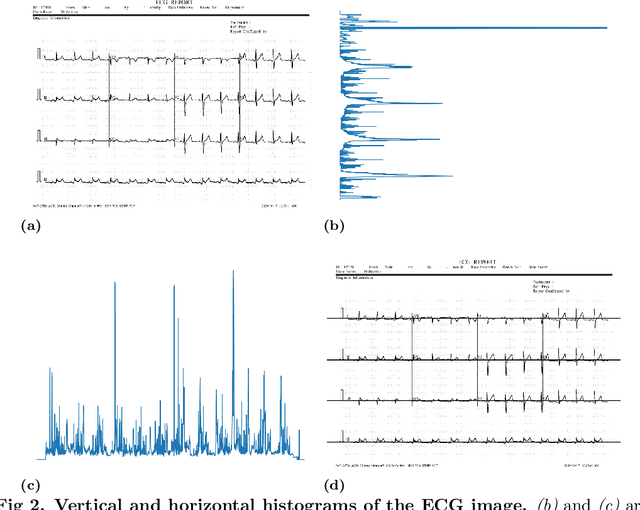

Abstract:The COVID-19 pandemic has exposed the vulnerability of healthcare services worldwide, raising the need to develop novel tools to provide rapid and cost-effective screening and diagnosis. Clinical reports indicated that COVID-19 infection may cause cardiac injury, and electrocardiograms (ECG) may serve as a diagnostic biomarker for COVID-19. This study aims to utilize ECG signals to detect COVID-19 automatically. We propose a novel method to extract ECG signals from ECG paper records, which are then fed into a one-dimensional convolution neural network (1D-CNN) to learn and diagnose the disease. To evaluate the quality of digitized signals, R peaks in the paper-based ECG images are labeled. Afterward, RR intervals calculated from each image are compared to RR intervals of the corresponding digitized signal. Experiments on the COVID-19 ECG images dataset demonstrate that the proposed digitization method is able to capture correctly the original signals, with a mean absolute error of 28.11 ms. Our proposed 1D-CNN model, which is trained on the digitized ECG signals, allows identifying individuals with COVID-19 and other subjects accurately, with classification accuracies of 98.42%, 95.63%, and 98.50% for classifying COVID-19 vs. Normal, COVID-19 vs. Abnormal Heartbeats, and COVID-19 vs. other classes, respectively. Furthermore, the proposed method also achieves a high-level of performance for the multi-classification task. Our findings indicate that a deep learning system trained on digitized ECG signals can serve as a potential tool for diagnosing COVID-19.
A novel deep learning-based approach for sleep apnea detection using single-lead ECG signals
Aug 05, 2022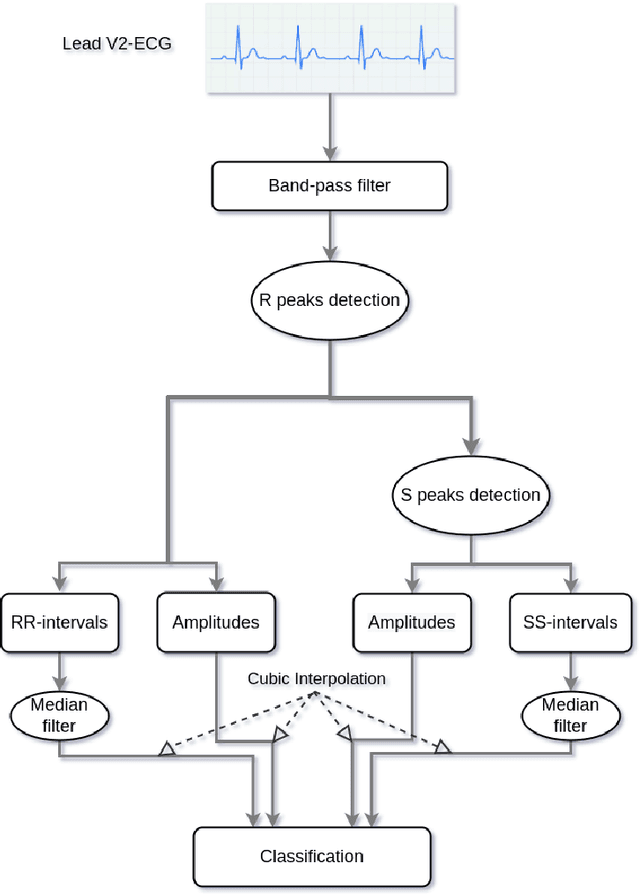
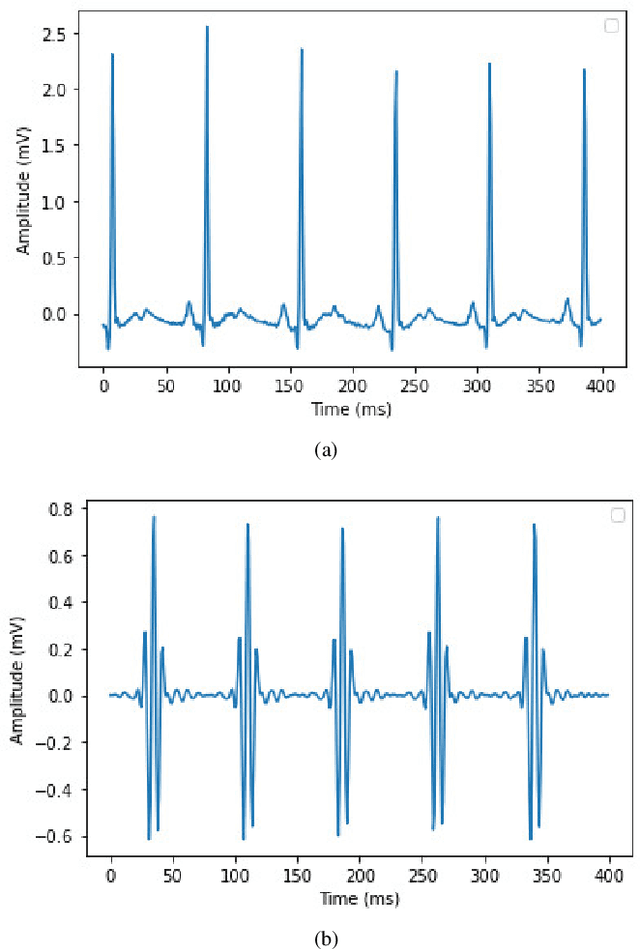
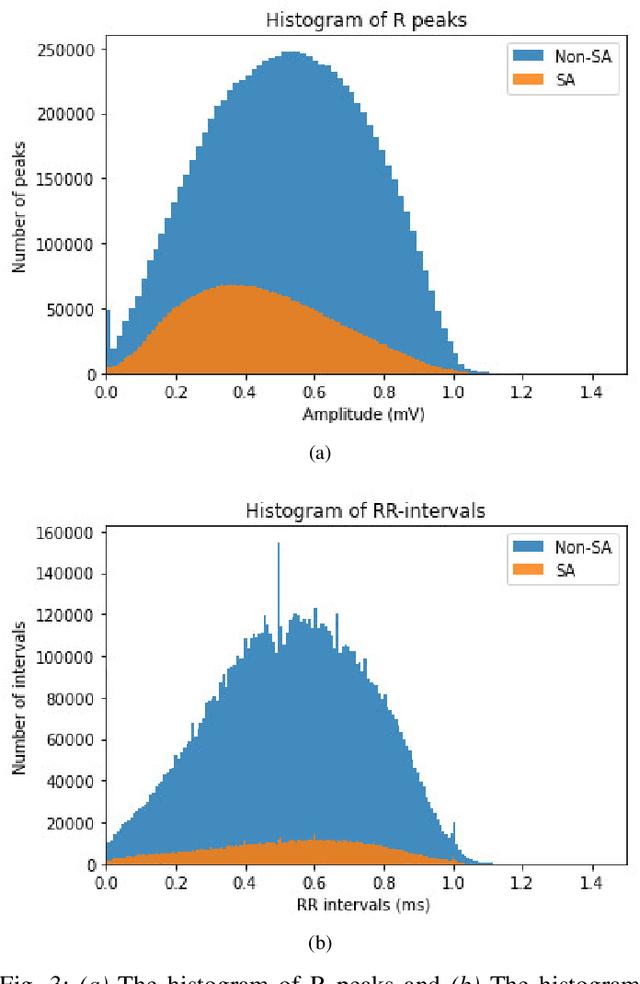
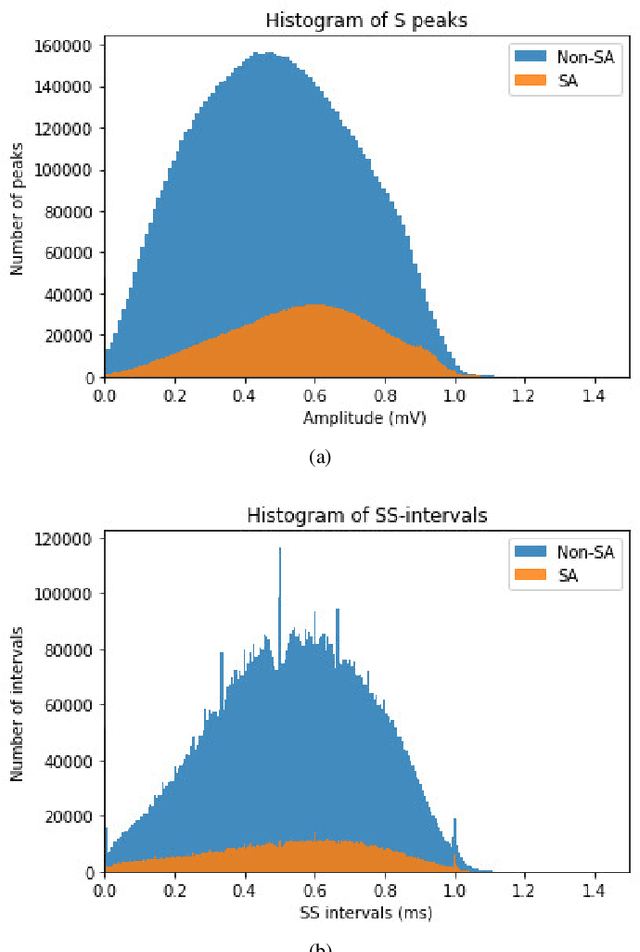
Abstract:Sleep apnea (SA) is a type of sleep disorder characterized by snoring and chronic sleeplessness, which can lead to serious conditions such as high blood pressure, heart failure, and cardiomyopathy (enlargement of the muscle tissue of the heart). The electrocardiogram (ECG) plays a critical role in identifying SA since it might reveal abnormal cardiac activity. Recent research on ECG-based SA detection has focused on feature engineering techniques that extract specific characteristics from multiple-lead ECG signals and use them as classification model inputs. In this study, a novel method of feature extraction based on the detection of S peaks is proposed to enhance the detection of adjacent SA segments using a single-lead ECG. In particular, ECG features collected from a single lead (V2) are used to identify SA episodes. On the extracted features, a CNN model is trained to detect SA. Experimental results demonstrate that the proposed method detects SA from single-lead ECG data is more accurate than existing state-of-the-art methods, with 91.13% classification accuracy, 92.58% sensitivity, and 88.75% specificity. Moreover, the further usage of features associated with the S peaks enhances the classification accuracy by 0.85%. Our findings indicate that the proposed machine learning system has the potential to be an effective method for detecting SA episodes.
 Add to Chrome
Add to Chrome Add to Firefox
Add to Firefox Add to Edge
Add to Edge